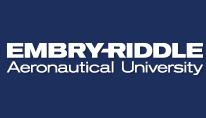T3-F: Educational Experiences and Lessons Learned in the Multidisciplinary Design, Fabrication, Integration and Flight Testing of Embry-Riddle High Altitude Science Engineering Rig (ERHASER) Payload aboard NASA’s WB-57 Aircraft
Location
Coastal
Start Date
5-3-2018 3:45 PM
Description
This paper describes the unique educational experiences and highlights the lessons learned during the multidisciplinary design, fabrication, integration and flight testing preparation of our prospective payload as part of the NASA’s Student Opportunities in Airborne Research (SOAR) pilot program aboard the WB57 aircraft. Our payload was comprised of several modular experiments referred as the Embry-Riddle High Altitude Science Engineering Rig (ERHASER), which was tested at about 60,000 feet during an analog suborbital trajectory over the Gulf of Mexico. One of the ERHASER’s experiments was dedicated to fly an ADS-B technology kit that can enhance students’ knowledge in Science Technology Engineering and Mathematics (STEM) with emphasis in aviation, and understand some of the challenges the Federal Administration Aviation (FAA) is facing with integrating new emerging era of suborbital space vehicles into the National Air Space. Understanding suborbital requirements, procedures and ADS-B performance are critical to better assess prospective point-to-point suborbital flights. This is a great opportunity for Embry-Riddle students to use the WB-57 research platform as a high-altitude performance aircraft in testing the functionality of ADS-B technologies during these analog suborbital trajectories. ERHASER’s second experiment consisted of radiation environmental measurements to test its effects on in-vitro biological alterations. Our biological system was composed of murine T-cells primed with different cytokines and cells treated with medicinal plant supercritical extracts. The goal of this study is to investigate the radiation induced cellular damage on these murine immune cells during the WB-57 flight, and to determine the role of supercritical extracts in reversing the epigenetic changes potentially induced by exposure to radiation. These unique experiences provide guidelines that helped faculty to work with students from different disciplines to design, fabricate, integrate and conduct flight tests successfully.
T3-F: Educational Experiences and Lessons Learned in the Multidisciplinary Design, Fabrication, Integration and Flight Testing of Embry-Riddle High Altitude Science Engineering Rig (ERHASER) Payload aboard NASA’s WB-57 Aircraft
Coastal
This paper describes the unique educational experiences and highlights the lessons learned during the multidisciplinary design, fabrication, integration and flight testing preparation of our prospective payload as part of the NASA’s Student Opportunities in Airborne Research (SOAR) pilot program aboard the WB57 aircraft. Our payload was comprised of several modular experiments referred as the Embry-Riddle High Altitude Science Engineering Rig (ERHASER), which was tested at about 60,000 feet during an analog suborbital trajectory over the Gulf of Mexico. One of the ERHASER’s experiments was dedicated to fly an ADS-B technology kit that can enhance students’ knowledge in Science Technology Engineering and Mathematics (STEM) with emphasis in aviation, and understand some of the challenges the Federal Administration Aviation (FAA) is facing with integrating new emerging era of suborbital space vehicles into the National Air Space. Understanding suborbital requirements, procedures and ADS-B performance are critical to better assess prospective point-to-point suborbital flights. This is a great opportunity for Embry-Riddle students to use the WB-57 research platform as a high-altitude performance aircraft in testing the functionality of ADS-B technologies during these analog suborbital trajectories. ERHASER’s second experiment consisted of radiation environmental measurements to test its effects on in-vitro biological alterations. Our biological system was composed of murine T-cells primed with different cytokines and cells treated with medicinal plant supercritical extracts. The goal of this study is to investigate the radiation induced cellular damage on these murine immune cells during the WB-57 flight, and to determine the role of supercritical extracts in reversing the epigenetic changes potentially induced by exposure to radiation. These unique experiences provide guidelines that helped faculty to work with students from different disciplines to design, fabricate, integrate and conduct flight tests successfully.


